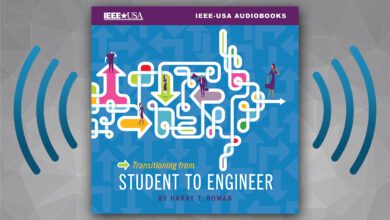
I live on the tenth floor of an apartment building in Los Angeles, and so I spend some amount of time every day in an elevator. Our elevators aren’t gleaming modern conveyances. They’re decades old, and they do not whoosh from the lobby to the top floor in seconds. Instead, they trundle up at a steady, unambitious pace.
Almost everyone who gets on our elevator turns immediately to their phones — except those with impatient dogs, eager to visit the nearest bush. Those people talk to their dogs. But pretty much everyone else zooms in on a screen. As the elevator fills up and we’re packed shoulder to shoulder, it’s hard not to notice all the scrolling and swiping going on. Really, I’m not snooping, it’s just right there, 12” from my face. Wechatting. WhatsApping. Facebooking. Instagramming. Step counting. Emailing.
Is elevator phone time simply about finding a way to be productive and not waste a minute? Or is it a hyper-reluctance to be bored, always seeking something to fill an idle moment?
Idle-ness
That word “idle” has developed a bad reputation. When a machine idles, that’s time it’s not accomplishing anything. A supervisor hoping to optimize his production team squeezes every last idle moment out of a day’s work. “Idle” is associated with lost productivity. Who has time for idling when everything is whipping along in a full-speed-ahead blur?
So as not to idle, many of us work every day, all the time, anytime, sometimes on our phones. We drop in on a nagging work problem whenever the mood strikes, or work on project deliverables after dinner or in the middle of the night, respond to (or selectively ignore) email at all hours.
That’s the double-edged sword of immediate, around-the-clock interconnectedness: you can work whenever you want, so you do.
So we eliminate idle time to ratchet up productivity. But that’s not good enough, so we add in multitasking. You can’t possibly be idle when you’re doing two or three things at once.
Truth is multi-tasking is a hoax perpetrated by optimistic financial controllers who persuaded hiring managers and HR staffers that more work could be done with fewer people. The idea was that individuals (especially talented ones) should be capable of doing several cognitive functions simultaneously. All that was needed was to exploit that trait and — voilà! — save lots of salary dollars.
There isn’t a shred of neuroscience that supports this claim, but that didn’t stop multitasking from becoming job requirement for every job. A Stanford study a few years ago reported that multitasking actually reduces one’s IQ — not exactly a desirable trend in a knowledge economy. The study also found that those who said they were, in fact, adept at multitasking were actually terrible at it, worse than people who claimed to prefer doing one thing at a time. The self-proclaimed masters of multitasking had a lot of trouble organizing their thoughts and sorting out relevant from irrelevant information.
The main problem with multitasking is that it assumes the brain can do two things at once. But it can’t, not two cognitive functions. Sure, you can ride an exercise bike and read a book at the same time, but only one of those calls on your cognitive abilities.
The gist of the study results appeared in “Forbes” a few years ago, in an article called “Multitasking Damages Your Brain and Career, New Study Suggests.”
The Rev Cycle
As the professional rev spins ever faster, the personal does, too. Beyond the job, it seems as if there’s so much to keep track of, stay ahead of, worry about, and not miss out on. We tackle that similarly: (1) no idle moments and (2) multitask (or try to).
And that takes me back to my neighbors in the elevator — and I’m sure it’s true in the elevators you hang out in — turning to the phone because we’re supposed to be doing something, not idling. We must always be at the ready to somehow prevent boredom from gaining any kind of ground, even during that twenty-second ride between floor 10 and the lobby.
Seeing everyone nose-in-screen has started to make me wonder why we routinely give away our free time — whatever little free time we might scrape together — to technology.
Yes, we’re responding to the accelerated rev of everyday life. Yes, we’re giving credence to the idea that multitasking is possible, or at least that it’s here to stay. But have we forgotten how to be alone with our own thoughts? Is solitude just a luxury?
Are we simply so unaccustomed to idle moments that we’ll do anything not to go there?
The Upside of Boredom
Child psychologist Theresa Belton encourages parents to let their children be bored. She advises not filling every moment with activities, sports, and screen time because boredom, she explains, leads to coping skills. Boredom also teaches patience. When you take away idle time, kids never learn to wait.
Further, Belton says, from boredom comes creativity. Fill up every moment with a game, a movie, or any activity invented by someone else, and kids never learn to invent their own diversions.
There’s no reason not to apply that same reasoning to adults. If we’re always diverted, we forget how to wait. When we’re forced to wait, as we inevitably are, we go straight to agitation.
And what about idle time as a catalyst for creativity? You don’t have to think about it long to realize that this advice doesn’t just apply to kids. When do great inventions spring from the minds of great inventors? While they’re watching cat videos? While they’re step counting?
Creative effort and focus are also needed to tackle technical problems — the systematic process of elimination, the tapping into the wellspring of the imagination to figure out what he heck might be going wrong. This sort of thing takes thought, not distraction. Quiet time, not noisy time. Focused attention on one thing, not multiple things.
“Digital Minimalism”
In his book “Digital Minimalism: Choosing a Focused Life in a Noisy World,” Dr. Cal Newport recommends what he calls a “digital de-clutter,” sorting the technology that aligns with our values from the technology that doesn’t. He says the way to recapture idle time and improve our ability to listen and concentrate is to decrease the amount of time we’re engaging in things that encourage us not to listen and concentrate.
Logical.
Dr. Newport goes so far as to recommend stepping away altogether from online living for an entire month and to consider instead engaging in actual live conversations, reading actual books, and staring at actual nature. His book includes accounts of any number of people who followed this prescription and reported results ranging from improved focus to a greater sense of calm in the midst of any fray.
Of course, you might expect him to recount successful results in his own book. While I can’t say I’ve tried his specific digital de-clutter myself, I know someone who has, a twenty-something data scientist who said after three weeks that he did indeed feel less anxious, less behind on things, and less like life was playing tug-of-war with him. At the end of the month, he brought back a few apps that he said aligned with his values and left the rest, most of it social media and games, unrestored. That’s what Dr. Newport recommends at the end of this cleanse: bring back what is meaningful.
We can all identify the technology we must use — to do our jobs, to run our lives. Those things aren’t part of our de-clutter. But what about the technology that’s we’re giving away our free time to? Can we identify that? Should we?
Life is short. We hear that a lot. There’s never enough time. We hear that too. We think there’s nothing we can do about either one.
But maybe there is.
Susan de la Vergne is a writer and communication instructor who worked in software development and Information Technology leadership for a very long time. Susan is the author of Engineers on Stage: Presentation Skills for Technical Professionals. Find more of her Cogent Communicator columns here.






